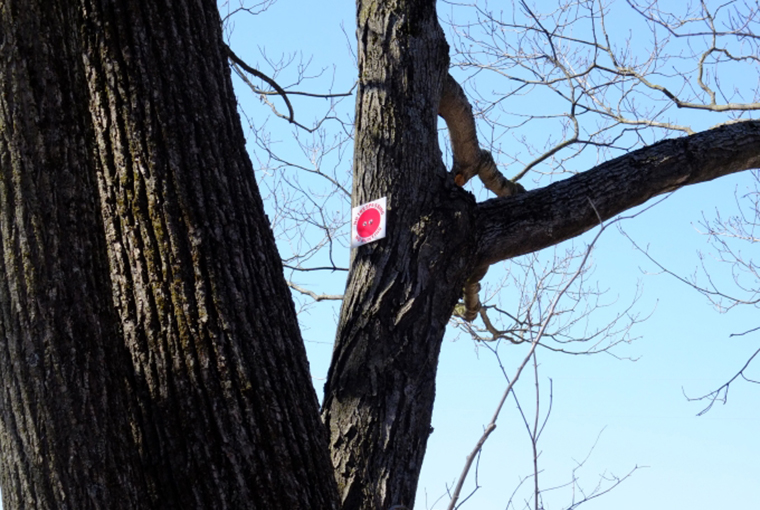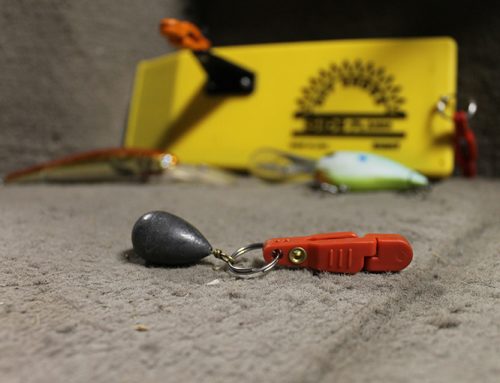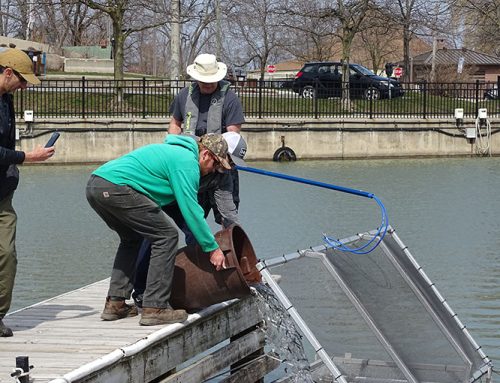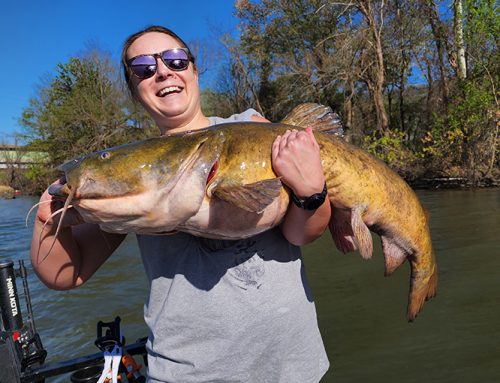
Q: Anglers and hunters understand that red dots spray painted on trees and posts by landowners represent no trespassing, but are red dots legally recognized? I have asked, and some of my friends didn’t know the significance of a red dot. If they accidentally trespassed on land with red dots but without physical “no-trespassing” signage, could they be charged?
— Rick Lovejoy, Stayner

Dots are legal indication
A: Yes, red dots are a legal indication that trespassing is prohibited. In fact, red markings are sufficient; they do not have to be dots.
Under the Trespass to Property Act, unless acting under a right or authority conferred by law (e.g. a conservation officer acting under the Fish and Wildlife Conservation Act, 1997 entering private property to ensure compliance with that Act) entry onto premises without the express permission of the occupier of the property is prohibited. Entry on the property can be provided by notice or, in certain circumstances, without notice. There are several ways of giving notice; these include orally, in writing, signs, or by way of a marking system.
The Act states that red markings that are of sufficient size that a circle 10 cm in diameter can fit entirely in them, and are placed such that the markings are clearly visible in normal daylight conditions from the approach to each ordinary point of access to the property, are sufficient for the purpose of giving notice that entry on the premises is prohibited. So, as long as the red dots are a minimum 10 cm in diameter, entry is prohibited and a person could be charged if they entered the property.
As mentioned above, entry can even be prohibited where no notice is given. This is the case where a property is a garden, field, or other land that is under cultivation, premises on which trees have been planted but have not yet reached an average height of more than 2 metres, woodlots on land used primarily for agricultural purposes, and land that is enclosed in a manner that indicates the occupier’s intention to keep persons off the premises or to keep animals on the premises.
—David Critchlow (Provincial Enforcement Specialist, MNRF)
Click here for OFAH’s printable landowner permission record.
Send your questions by clicking here.
Originally published in the June 2019 issue of Ontario OUT of DOORS magazine. Ask a CO is also a regular feature in the print edition.






Does this also include police officers?
Hello – I need to boundary mark my 185 acre woodlot in Haliburton. It is entirely undeveloped and controlled with a Managed Forest Plan. I understand that I need to paint the circular marks in red – what I can’t find is the frequency of markings along the property line. Are they meant to be only marked on access (logging) roads, or along the adjoining gravel road and how often (all I can find is that the next mark has to be visible from the first mark)? What about the property lines in the bush? Thanks!
From the MNRF, now known as the MNDMNRF (Ministry of Northern Development, Mines, Natural Resources and Forestry): If you are intending to give notice that entry onto your property is prohibited without permission, there are a number of methods you can use, one of which is red markings. Other methods include fencing and signs. In addition, some premises do not need any notice that entry is prohibited; these include gardens, fields under cultivation, and premises on which trees have been planted if the trees have not yet attained an average height of two metres.
If using red markings, the Trespass to Property Act requires that the red markings be of sufficient size that a circle 10 centimetres in diameter can fit in them and that the markings are clearly visible in daylight under normal conditions, at each ordinary point of access to the property. There is no distance prescribed with regards to how far apart markings must be; certainly if each mark is visible from the previous mark and there are marks at the usual points of entry, the requirements of the Trespass to Property Act are being met.
If there are no ordinary points of entry along the property line in the bush, then there is no requirement to mark the line. However, you may wish to consider placing at least some marks along this line as well.
Some of the local “experts” here insist that if I have the red dot “No Trespassing – No Hunting” sign up on my property, that means that even I can’t hunt it myself. As the landowner, this sound ridiculous to me. Not only do I retain the right to hunt on my own property, but I can also give permission to someone else to hunt it, despite having the signs up. Am I right, or wrong?